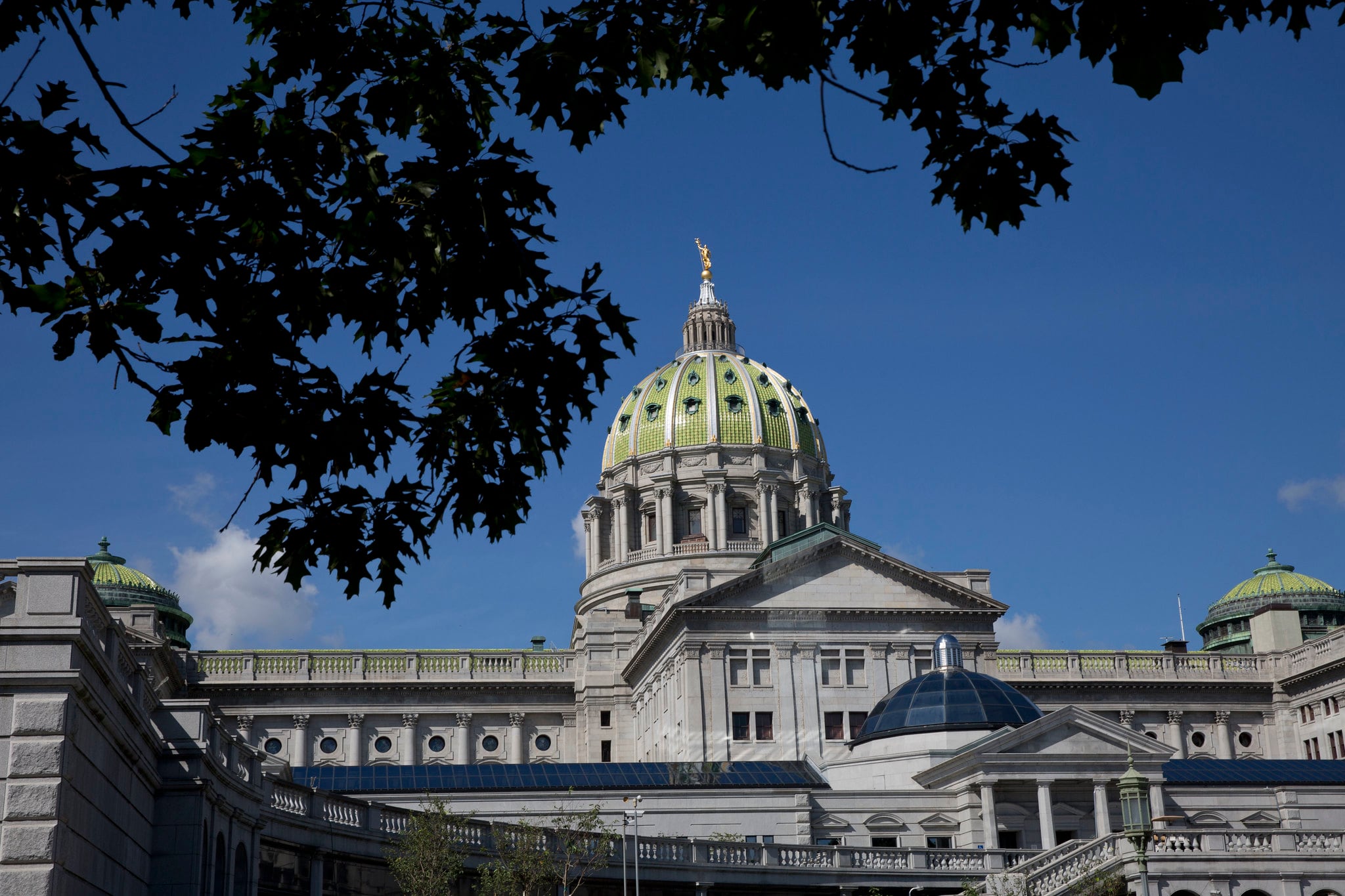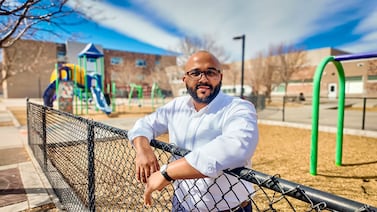Spotlight PA is an independent, nonpartisan, and nonprofit newsroom producing investigative and public-service journalism that holds power to account and drives positive change in Pennsylvania. Sign up for our free newsletters.
How much money to spend on Pennsylvania’s public education system has become a key barrier to a budget deal as lawmakers launch a barrage of talks ahead of the June 30 deadline.
Leaders in the split legislature say there are potential compromises on other key topics, including overhauling the state’s permitting process, making college cheaper, and creating new tax breaks.
But deciding how much money to spend on K-12 education remains an obstacle to closing a deal. Democrats who want to increase spending point to decades of funding inequality between rich and poor public school districts, while Republicans who want to curb costs warn of financial calamity if spending increases too quickly.
Lawmakers have to overhaul Pennsylvania’s funding system for basic education, following a judge last year ruling that the status quo is unconstitutionally inequitable. The commonwealth is also flush with cash, with $14 billion in reserves that have continued to grow this year.
Budget negotiations kicked off in February when Gov. Josh Shapiro, a Democrat, made his annual pitch to the legislature. In it, he called for $48.5 billion in spending, an 8% increase from last year, and proposed that much of the new money should flow to the state’s K-12 education system. That spending would be covered using $3 billion of the state’s $14 billion in cash reserves, Shapiro proposed.
In a state that has historically run deficits, the idea raised alarm bells among legislative Republicans. Heading into the final stretch, state Senate Republicans’ main goal is keeping spending under control, Majority Leader Joe Pittman (R., Indiana) told reporters last week.
“We don’t have a fixed number in mind,” Pittman said last week. “What our focus is on [is] maintaining expectations, maintaining a reasonable growth of spending that allows us to be able to make sure that the taxpayers are protected.”
While some education issues, like adding more dollars for school construction, have bipartisan backing, Pittman said his goal is making sure the state doesn’t use up its reserves within the next three years.
That puts the state Senate at loggerheads with House Democrats, who called for new education funding for years when they were in the minority and are now determined to use their narrow majority to notch a victory on the issue. The 2023 state court ruling that found Pennsylvania underfunds public education in poorer districts has given their push extra weight.
Democratic lawmakers and the Shapiro administration authored a report earlier this year that proposes setting a baseline amount of per-student spending that increases based on factors like poverty and level of English proficiency within a district.
The report estimated it would cost $5.4 billion over the next seven years just to bring each district up to the new standard, alongside billions in additional dollars for property tax relief, school construction, teacher training, and school mental health resources — among other programs.
A bill that would implement that plan, and that includes changes to the way districts reimburse cyber charter schools that could save districts millions of dollars, passed the state House with bipartisan support earlier this month.
Sustaining such spending would quickly drain Pennsylvania’s cash reserves. But a University of Pennsylvania report released last week found that the benefits of increased education spending would outweigh the cost to taxpayers by boosting graduation rates and leading to “improved individual earnings, health, economic productivity, and reduced crime and government dependency.”
“We’ve been making the point that Pennsylvania pays a huge price, and has been paying it for literally decades, by failing to adequately fund public education,” state House Majority Leader Matt Bradford (D., Montgomery) told Spotlight PA of the study.
Closed-door negotiations are ongoing, but insiders say that if lawmakers can agree on an education spending number, the rest of the trades that will make up the deal should fall into place.
Lawmakers say there is room for compromise on reducing the cost of higher education, updating the state’s business permitting process, and reducing taxes.
State Senate Republicans have advanced a package of bills that would offer scholarships to those who choose certain in-demand career paths, like computer science and nursing. Bradford added that he hopes to add elements of Shapiro’s higher education plan to find a deal.
“I think there is common ground about the need to make college more affordable, but also retain Pennsylvania students,” Bradford said.
Republicans’ longtime push to rewrite how state regulators issue permits may also bear fruit this year.
The state Senate passed a bill last year that would require agencies to set internal timelines for each permit request. Under the measure, the permit would be automatically approved if a requester didn’t get a response by those deadlines.
Democrats and environmental groups have traditionally opposed such efforts, arguing the practice could lead to more pollution and potentially threaten funding tied to enforcing federal environmental laws. But Shapiro has tried to speed up the permitting process within his administration, and Bradford said last week that he’s been “hearing out” the state Senate on its bills amid talks.
“We believe a government that is efficient is in everyone’s best interests,” Bradford said.
Finally, tax policy appears to be a potential bargaining chip. Responding to Shapiro’s spending plan, state Senate Republicans passed a $3 billion tax cut plan in May with Democratic support, arguing that Pennsylvania’s good financial position should be a sign to reduce taxes rather than increase spending.
Their bill would slightly lower the state’s flat income tax. The benefits of the plan would be small and would skew toward higher earners, the liberal Pennsylvania Policy Center said in a brief. According to the group’s data, the wealthiest 1% of taxpayers would save an average of $5,400 a year while the bottom 20% would get back just about $20.
Last week, Pittman said the state Senate’s proposal was an attempt “to do something within the world of taxation to be dynamic in encouraging growth and investment,” and that he welcomed House Democrats’ counterproposal.
Bradford told Spotlight PA he is willing to look at tax cuts as part of a budget deal. He also argued that the best way to get money into working people’s pockets would be a state version of the earned income tax credit, a federal program that gives a tax break to people under certain income levels.
A bill that would create such a program passed the state House last year but has lingered in the Senate.
The deadline for a deal is Sunday. Both chambers have scheduled voting session days through the weekend, which will likely be filled with closed-door negotiations, boisterous public rallies, and late-night votes.
The stakes of missing the deadline are low at first. While an on-time budget holds symbolic value for lawmakers in the middle of a key election year, a delay of a few days or even a week isn’t a big deal for government operations.
The state is bound by statute to pay its workers, cover debt payments, and continue many other critical government functions even without a budget. However, last year’s delayed budget — which wasn’t approved until December — showed that within weeks, the lack of funding can constrict the operations of county governments, libraries, and other core services supported by public money.
Pittman and Bradford have insisted that a ticking clock won’t make them change their approach.
“The test by which we judge the product is what is in it,” Bradford said.






